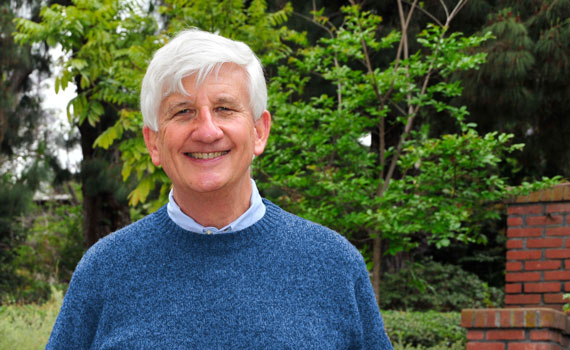|
SOHO President's Message
By David W. Goldberg
July/August 2024
As a longtime SOHO member—nearly a half a century, yikes!—it’s pretty clear that I’m a true believer. I take great pride, as we all can, in being part of an organization that’s accomplished so much good over the years. That said, I admit I’m probably not the most objective observer, which is why the prestigious 2024 President’s Award for Advocacy that the California Preservation Foundation recently presented to SOHO is so meaningful.
The awards ceremony was held at the historic Biltmore Hotel in Los Angeles (well worth a visit if you haven’t been there), where Vice President David Swarens and I accepted the award on behalf of SOHO. It was wonderful seeing old friends, meeting and talking to some of the most distinguished preservationists in the state, hearing success stories, and learning about challenges others are facing. Most important, however, is having California’s preeminent statewide preservation organization recognize SOHO’s achievements since its founding in 1969 and the important work we do every day.
This is a shared success and something truly worth celebrating. Kudos to SOHO leadership, staff, volunteers, members, friends, and all of us who made this happen!
 David Goldberg in the formal gardens at the Marston House. Photo by Sandé Lollis |
More good news! SOHO and the City of San Diego have finalized an agreement where SOHO will manage a $1 million exterior restoration project of the Marston House. The funding, provided by the State of California, is part of a $68.5 million grant for 19 different projects across the city.
The benefits of SOHO acting as project manager are substantial. SOHO has the knowledge, expertise, and contractor network to ensure that the job will be done right and in accordance with best preservation practices. Moreover, SOHO won’t be taking any management fee or using any of the funds to cover overhead costs, as would be the case if the City managed the work. Every penny received will go directly to restoring the Marston House.
In late 2022, when the funding was first announced, I stated that this grant couldn’t come at a better time. Now, 18 months later, there isn’t any time to lose. The Marston House hasn’t undergone regular and necessary maintenance since the 1990s, with the 2017 roof replacement being the last major repair.
The $1 million will go a long way in resolving these pressing problems and helping protect this historic treasure for years to come. Restoration work is expected to be completed in three to four months. Kudos to the City Council, City staff, and everyone involved in pushing the ball forward.
While this funding will significantly help return the Marston House to its former glory, additional funds are needed to implement SOHO’s long-term restoration plans. Costs have gone up since the announcement in 2022, with time and vandalism bringing further deterioration to the crumbling brick. An additional $250,000 at a minimum is needed to complete the exterior restoration and address landscape needs. Be on the lookout for a SOHO fundraising campaign to cover costs for the remaining work, and, if you are able to contribute, please be as generous as you can.
On another front, as the update to the City of San Diego's Heritage Preservation Program moves forward, it’s clear that historic preservation isn’t an impediment to new housing production after all. First, according to the City’s recent Independent Budget Analyst Report, historical resource reviews are not holding up new construction permitting, as some have complained. Second, only about 1% of potentially historic properties are being designated. And third, our total historic resources inventory only accounts for a small percentage of total housing stock.
So, what’s going on? The crux of the problem is that building affordable housing isn’t profitable. It’s not just me saying this, this is what the housing market tells us. New housing construction is almost entirely market-rate housing, not affordable housing. If affordable housing were a money-making venture, developers would be building it.
What’s the solution? There are no easy answers, but demolishing historic, older, and naturally occurring affordable housing (NOAH—existing multifamily rental properties that are affordable without public subsidy to low-income households) is counterproductive. Existing housing is almost always more affordable than new housing and should be treated as an asset, or resource, worth protecting.
Much more, of course, needs to be done, but replacing existing historic and older housing with newer more expensive housing only exacerbates the problem. A better approach would be to stop greenlighting market-rate housing when what is needed is affordable housing.
Furthermore, steps need to be taken to ensure that there is no net loss of today’s more affordable housing stock and, in instances of demolition, that equal numbers of truly affordable housing units are brought to market as mitigation. I’m not saying this will be easy, but it will get us back on track and push San Diego to find cost-effective and better solutions.
BACK to the table of contents
|
2025
2024
2023
2022
2021
2020
2019
2018
2017
2016
2015
|




